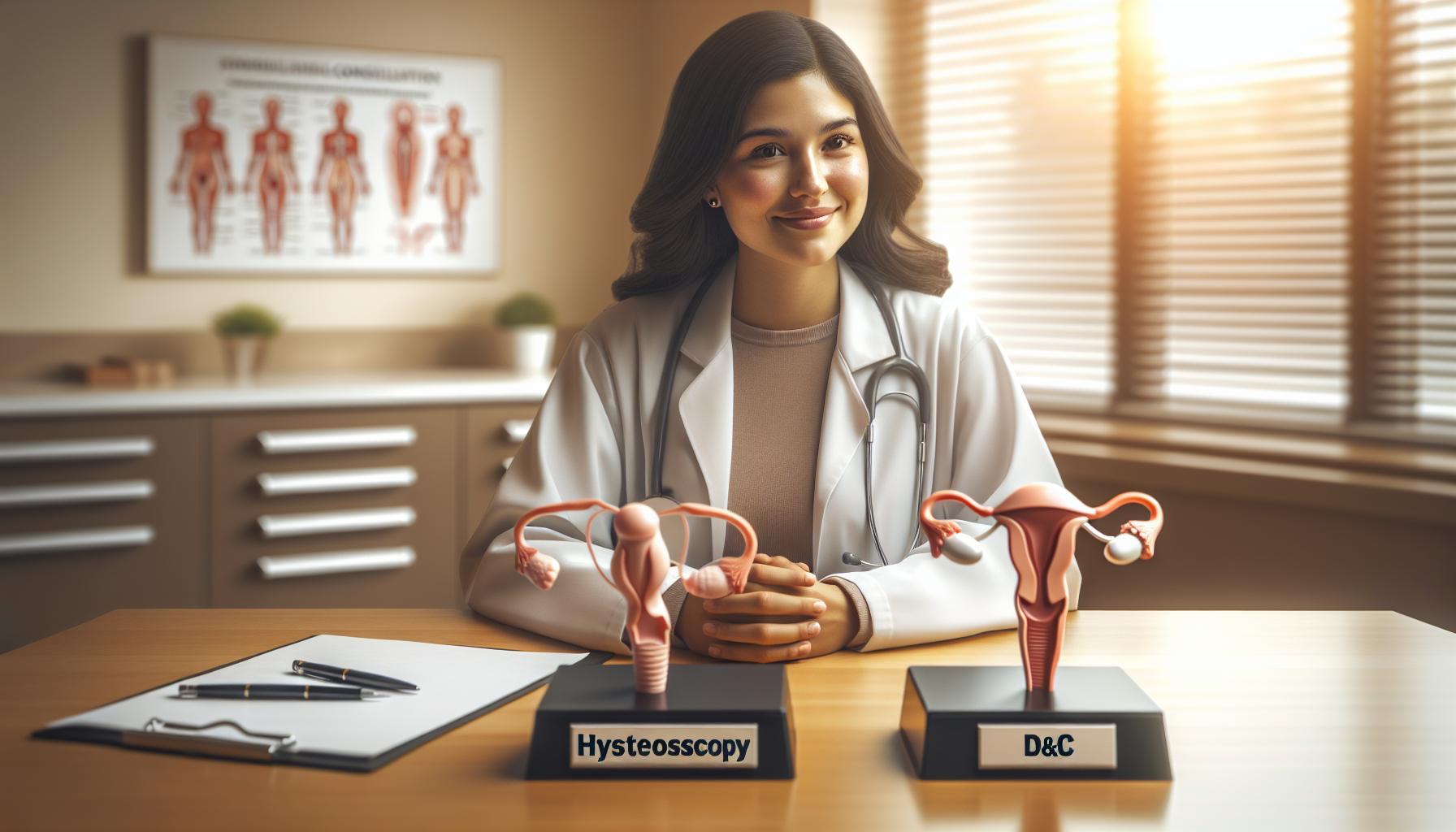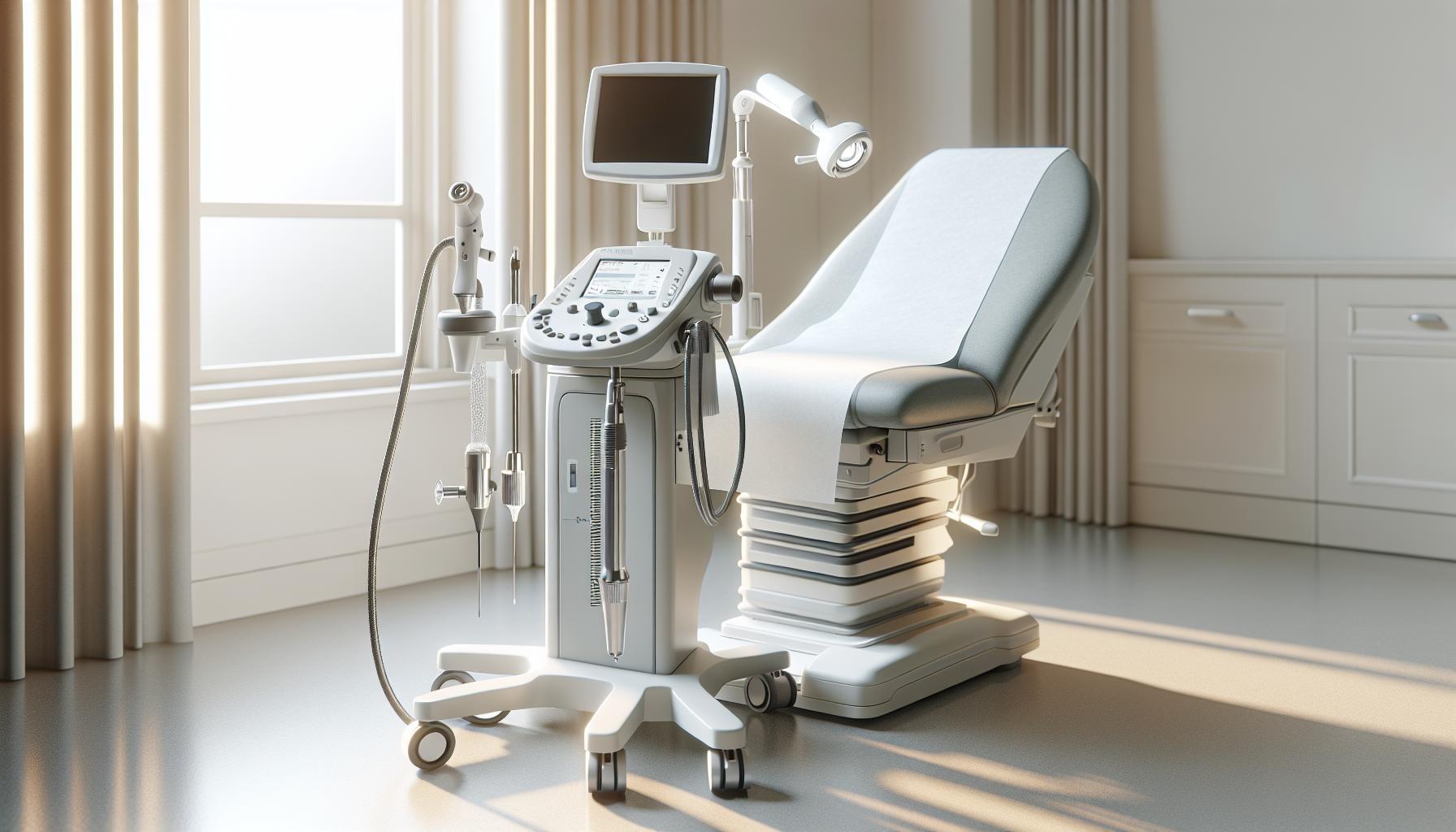-
Bleeding 3 Weeks After Hysteroscopy: When to Seek Medical Help
Experiencing bleeding three weeks after a hysteroscopy can be concerning. It’s important to listen to your body; if the bleeding is heavy or accompanied by pain, consulting your healthcare provider can help ensure your well-being and peace of mind.
-
Can Polyps Be Removed During Hysteroscopy? Success Rates Revealed
If you’re wondering whether polyps can be removed during a hysteroscopy, you’re not alone. This gentle procedure often offers successful removal, providing relief and peace of mind. Remember, your concerns are valid—talk openly with your doctor about your options.
-
Hysteroscopy vs D&C: Key Differences to Help You Understand Both
Understanding the differences between hysteroscopy and D&C can feel overwhelming, but you’re not alone. These procedures can help address uterine issues safely. We’ll break down what each one involves, empowering you to make informed choices about your health.
-
Complications Hysteroscopy: Rare Issues & How Doctors Prevent Them
Hysteroscopy can be invaluable for diagnosing and treating uterine issues. While rare complications may arise, your healthcare team is trained to prevent them. Understanding these risks helps empower you to discuss any concerns openly with your doctor.
-
Bleeding Two Weeks After Hysteroscopy: When to Call Your Doctor
Experiencing bleeding two weeks after a hysteroscopy? It’s natural to feel concerned. While some light spotting can be normal, heavier bleeding or accompanying pain may signal a need for medical advice. Trust your instincts—don’t hesitate to reach out to your doctor for reassurance and guidance. Your health matters!
-
Hysteroscopy Endometriosis: Can This Procedure Diagnose Your Pain?
Hysteroscopy is a gentle procedure that allows doctors to explore the uterus and diagnose conditions like endometriosis, which can cause pain. If you’re struggling with discomfort, this procedure may help uncover the cause, empowering you to take control of your health and find relief. Remember, you’re not alone—open communication with your healthcare provider is key.
-
Hysteroscopy Tubes: How This Procedure Examines Your Fallopian Health
Hysteroscopy tubes allow doctors to take a close look at your fallopian tubes and overall reproductive health. This gentle procedure helps identify issues while ensuring you feel supported and informed every step of the way. Your health matters!
-
Hysteroscopy for Infertility: Boosting Your Conception Chances
Hysteroscopy offers a clear view of the uterus, helping identify issues that may affect fertility. This gentle procedure can uncover and treat problems, empowering you on your journey to conception. Know that you’re not alone—your hopes matter, and your health care team is here to support you.
-
Can Hysteroscopy Remove Fibroids? Size Limits & Success Rates
Hysteroscopy can be an effective option for removing fibroids, helping many women find relief. Understanding size limits and success rates is vital. Feel empowered to discuss your concerns with your doctor—your comfort and health are a priority.
-
Hysteroscopy Pain Relief: Top 5 Methods That Actually Work
Navigating hysteroscopy can be daunting, but understanding your pain relief options can empower you. Discover five effective methods that truly help ease discomfort, allowing you to focus on your health and recovery with confidence.
-
Can Hysteroscopy Miss Polyps? What Every Patient Should Know
Hysteroscopy is a valuable procedure for identifying uterine issues, but sometimes polyps can be missed. It’s important to discuss any concerns with your doctor, who can help you understand your options and ensure your health is prioritized.
-
Hysteroscopie vs Hysteroscopy: International Terminology Explained
Understanding “Hysteroscopie” and “Hysteroscopy” can be confusing, but it’s important to know both terms refer to the same procedure. This minimally invasive test helps doctors check your uterus for any concerns, guiding you to better health with compassion and clarity.
-
Post Hysteroscopy: 7 Essential Tips for a Smoother Recovery
Recovering from a hysteroscopy can feel daunting, but you’re not alone. Here are 7 essential tips to help you on your journey to comfort and healing. Listen to your body, stay informed, and always reach out to your healthcare team with any questions. You’ve got this!
-
Can a Hysteroscopy Hurt? Honest Pain Levels & Management Tips
Experiencing anxiety about hysteroscopy is completely normal. While some discomfort may occur during the procedure, many women find it manageable. Understanding what to expect can help ease your worries and empower you to ask your doctor all the right questions.
-
Why Is a Hysteroscopy Better Than Other Diagnostic Procedures?
When it comes to understanding your reproductive health, a hysteroscopy stands out as a gentle, direct approach. Unlike other tests, it allows your doctor to see inside the uterus in real-time, providing clear answers to your concerns and empowering you to make informed choices about your health journey.
-
Truclear Hysteroscopy: Benefits of Advanced Tissue Removal
Truclear Hysteroscopy offers a gentle approach to uterine health by effectively removing abnormal tissue. This advanced procedure not only alleviates discomfort but also empowers women to take charge of their wellness. Trust in a solution that prioritizes your comfort and healing journey.
-
How Painful Is A Hysteroscopy? Honest Answers & Pain Management Tips
Hysteroscopy can bring up concerns about discomfort, but understanding what to expect can ease anxiety. We’ll guide you through the process, share honest insights on pain levels, and offer effective tips for managing any discomfort. You’re not alone on this journey.
-
Chances Of Pregnancy After Hysteroscopy: New Hope For Conception
Hysteroscopy offers hope for many seeking pregnancy. This gentle procedure can help clear the way for conception by addressing uterine issues. Understanding your options empowers you to make informed choices on your path to parenthood.
-
Hysteroscopy Drainage: Normal Discharge vs. Warning Signs
After a hysteroscopy, it’s normal to experience some discharge, but knowing the difference between typical symptoms and warning signs is crucial. Understanding your body can empower you, so stay informed and communicate with your healthcare provider about any concerns.
-
Can I Exercise After Hysteroscopy? Safe Recovery Activities
After a hysteroscopy, it’s natural to wonder about exercising. While gentle activities like walking can help, it’s best to listen to your body and consult your doctor for personalized advice. Remember, your recovery journey is unique—take it one step at a time.




















